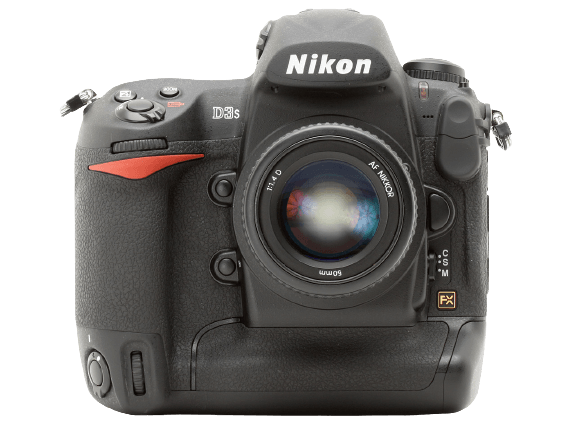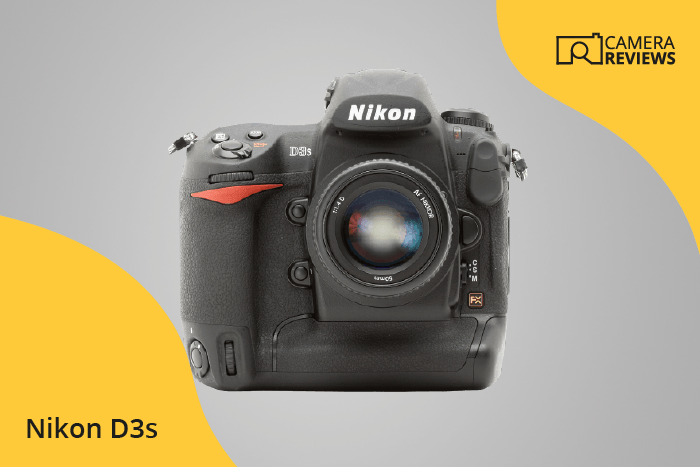Nikon D3s Specs and Scores

The Nikon D3s scores a solid 57/100 in our evaluation. Announced on October 14, 2009, and released the same year, this DSLR camera came out with a hefty launch price of $5,510. Measuring 160 x 157 x 88mm and weighing 2.73lbs (1240g), the D3s has a substantial presence.
Although the Nikon D3s is over a decade old, its specifications remain respectable, especially for photography enthusiasts. However, compared to more recent cameras, the D3s may not be the most competitive choice in today’s market.
Nikon D3s Overview and Optics
The Nikon D3s received a score of 55/100 for its optics. With 12.1 megapixels, it has a lower resolution compared to modern cameras. The shooting speed of 11 frames per second is decent, yet not exceptional in today’s market. The camera has a full-frame CMOS sensor, which contributes to its DXOMARK score of 82. This score shows that the sensor performs well, but there are better options available.
The Nikon D3s uses an Expeed processor and is compatible with the Nikon F FX lens mount. Unfortunately, it lacks image stabilization, which is a disadvantage for photographers requiring steady shots. Its aspect ratio of 3:2 is standard for most cameras.
While the Nikon D3s has a few strong features, its optics do not stand out in the current market. Its lower resolution and absence of image stabilization make it less competitive compared to the latest camera models.
Nikon D3s Video Performance
While most modern cameras boast video capabilities, the Nikon D3s does not offer this feature. However, it compensates with a built-in time-lapse function, allowing users to create captivating time-lapse sequences easily.
Nikon D3s Features and Benefits
The Nikon D3s features a score of 54/100. With a 3-inch screen size and a resolution of 921,000 dots, the display is decent but lacks modern amenities. The absence of a touchscreen, flip screen, GPS, WiFi, and Bluetooth capabilities shows that this camera falls behind contemporary models.
Despite its limitations, the Nikon D3s remains a solid choice for photographers seeking a camera with essential features. However, those who require advanced connectivity and convenience may find the lack of modern specifications a drawback. The Nikon D3s is a reliable camera but may not fulfill the expectations of users who are accustomed to recent technological advancements.
Nikon D3s Storage and Battery
The Nikon D3s storage and battery capabilities score an impressive 87 out of 100. The camera comes equipped with two memory card slots, allowing for ample storage and easy switching between cards. It is compatible with CompactFlash (Type I) and UDMA memory cards, providing fast and reliable storage options.
In terms of battery life, the D3s boasts an impressive 4200 shots per charge, using the EN-EL4a battery type. This long-lasting battery performance is a significant advantage for photographers who need to capture many images without constantly changing batteries. However, the camera does not have USB charging capabilities, which may be inconvenient for some users who prefer this charging method.
Considering these specifications, the Nikon D3s storage and battery features hold up well in today’s market, providing photographers with reliable and efficient options for capturing and storing their images.
Nikon D3s Alternatives
Do you want to know how the Nikon D3s compares to its competitors? Have a look at the most popular comparisons for this camera below:
- Canon EOS 90D vs Nikon D3s
- Nikon D3 vs D3s
- Nikon D3s vs D5300
- Nikon D3s vs D7000
- Nikon D3s vs D3X
- Nikon D3s vs D4
- Nikon D3s vs D4
Nikon D3s FAQ
Does the Nikon D3s Have Built-in Image Stabilization?
The Nikon D3s does not have built-in image stabilization. However, it supports lenses with Vibration Reduction (VR) technology that helps minimize camera shake and blur.
Does the Nikon D3s Support 4K Video Recording?
The Nikon D3s does not support 4K video recording. It can record 720p HD videos at 24 frames per second, but it lacks more advanced video capabilities like 4K resolution.
What Size Sensor Does The Nikon D3s Have?
The Nikon D3s features a full-frame sensor, which measures 36 x 24 mm. This large sensor size enables better low-light performance and a shallower depth of field compared to smaller sensors.
Does the Nikon D3s Have a Dual Memory Card Slot?
Yes, the Nikon D3s has a dual memory card slot, allowing users to utilize two CompactFlash cards for more storage and backup options while shooting.
Does the Nikon D3s Have a Touch Screen?
No, the Nikon D3s does not have a touch screen. It features a 3-inch fixed LCD monitor for image review and menu navigation, but it does not support touch functionality.
Does the Nikon D3s Have Wi-Fi and Bluetooth?
The Nikon D3s does not have built-in Wi-Fi or Bluetooth capabilities. To wirelessly transfer images, users need to invest in an additional accessory, such as the WT-4A Wireless Transmitter.
Does the Nikon D3s Have GPS?
No, the Nikon D3s does not have built-in GPS functionality. However, it is compatible with external GPS units, such as the GP-1 GPS Unit, for geotagging purposes.
Is the Nikon D3s Weather Sealed?
Yes, the Nikon D3s is weather-sealed, making it resistant to dust and moisture. This rugged design allows for reliable performance in various shooting conditions and environments.
Does the Nikon D3s Have a Built-in Flash?
No, the Nikon D3s does not have a built-in flash. Instead, it has a hot shoe for attaching external flashes and other compatible accessories to enhance lighting options.

